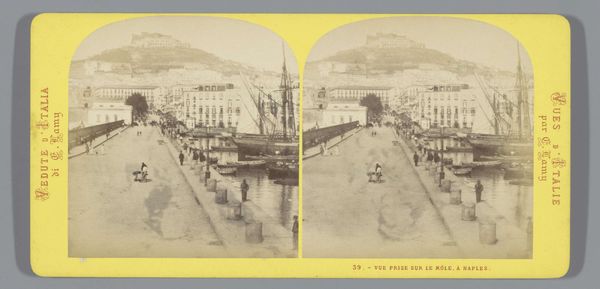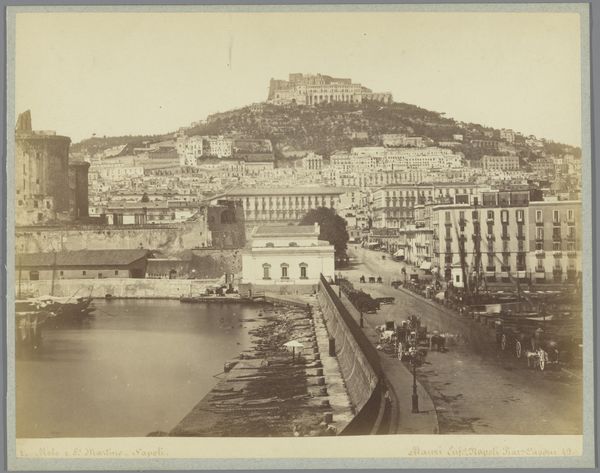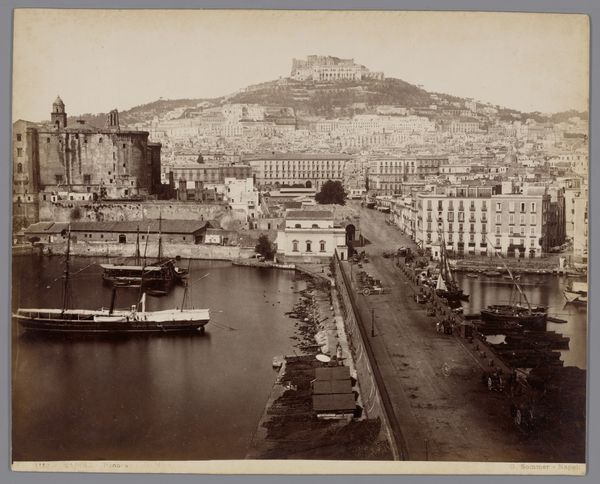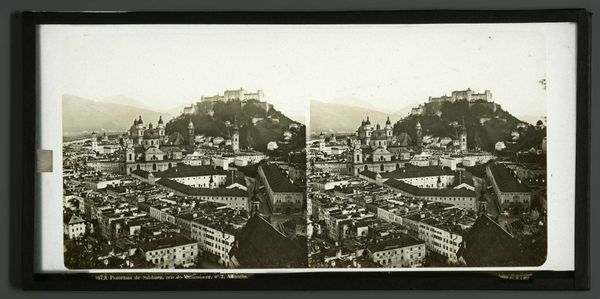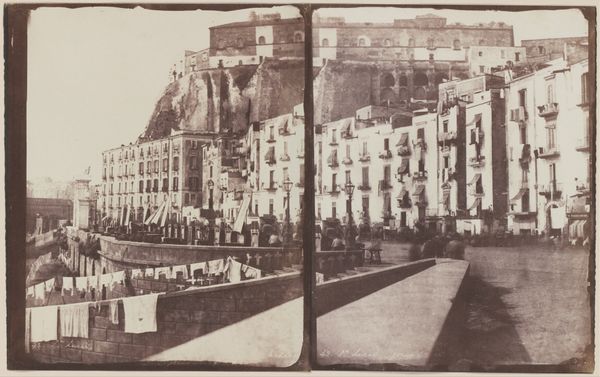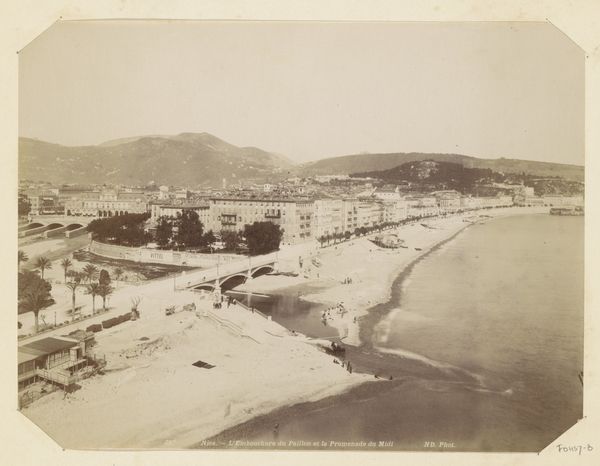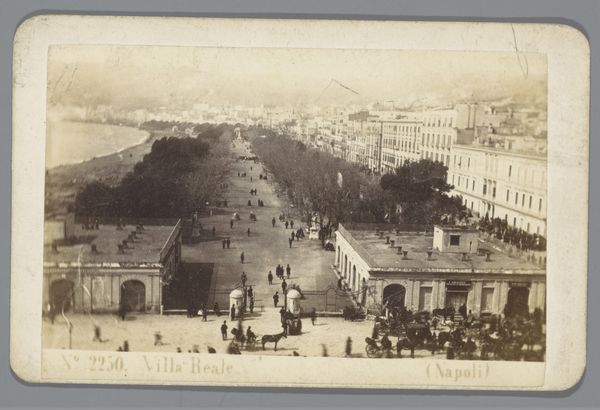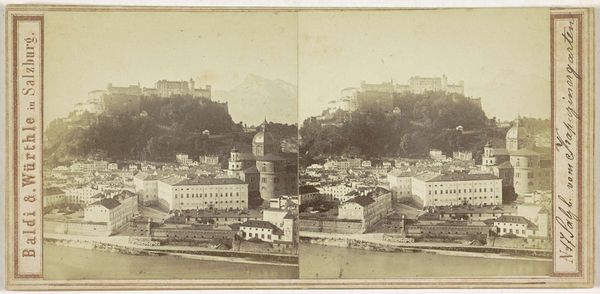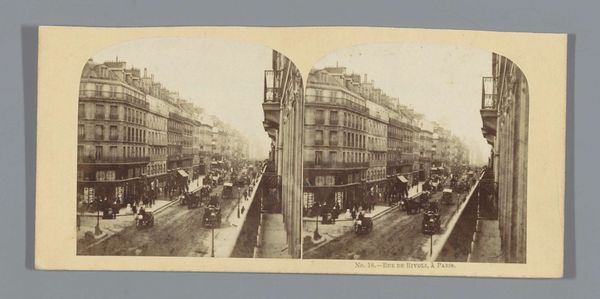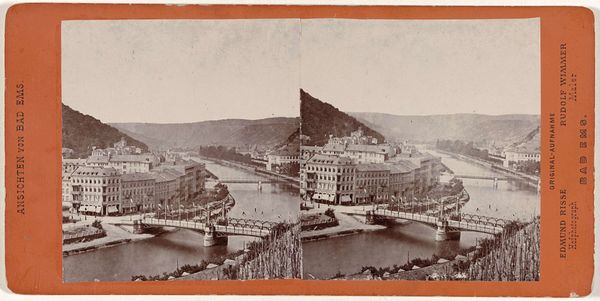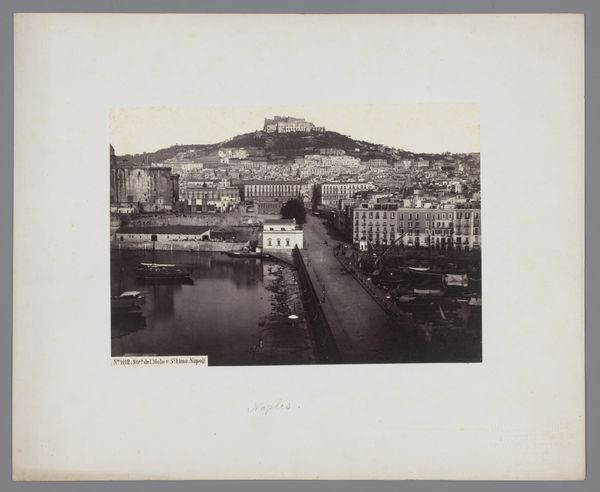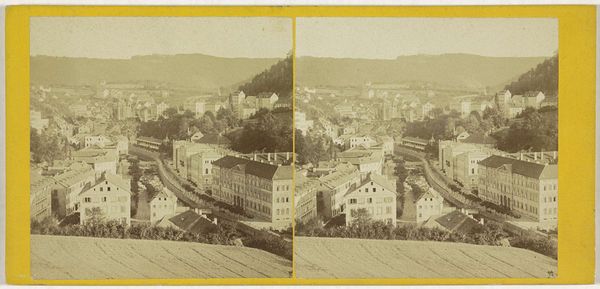
Dimensions: height 87 mm, width 178 mm
Copyright: Rijks Museum: Open Domain
Curator: From between 1861 and 1878, here we have Ernest Eléonor Pierre Lamy’s “View of Naples and the Castel Sant’Elmo,” captured with a gelatin silver print. Editor: It feels very monumental but also delicate, as if it captures a past that might slip away. The aerial perspective, with the strong architectural presence of the port, creates a distinct feeling of control and observation. Curator: Absolutely, and as a photographic print, this object itself has much to reveal about production processes in that era. The way light would have impacted the length of time needed to get the perfect shot really indicates the craftsmanship and skill. Moreover, considering that the photographer was most likely part of the bourgeois, consumption and art are being recorded hand-in-hand. Editor: Speaking of light, notice how Castel Sant’Elmo, perched high above the city, acts as this persistent symbol of power. Its image seems intentionally placed to oversee the vibrant but humble commercial activity below. You feel this continuous relationship between earthly trade and more divine and permanent forms of authority. Curator: Interesting… though I wonder how much of the ‘permanent authority’ aspect may be the photographer’s own commentary on Naples' sociopolitical environment, being perhaps more of an outsider looking in than actually having lived and worked in it. I'm curious, what significance might be attributed to a contemporary audience engaging with the art of photography in the latter 19th century, as the advent of consumer technology approached? Editor: The duality is potent. One could interpret the water, with its suggestion of movement and trade, as mirroring the dynamic shift from traditional symbolic representation to embracing new modes of seeing. This technology lets viewers experience and process place from the confines of their interior spaces. Curator: This piece exemplifies the transition from the classical to the photographic; as photographic technology improves, it, in turn, informs other traditional media, making art-making tools more accessible for a more socially and economically diverse pool of laborers. Editor: Yes, Lamy's photograph, as a historical object, invites reflection on both the continuities of power and evolving interpretations of place, technology, and memory. Curator: And indeed, examining this photo shows a shift in perspective of that time period using this very specific process of gelatin silver prints.
Comments
No comments
Be the first to comment and join the conversation on the ultimate creative platform.
